206 results
Astronomy study guide microsofts
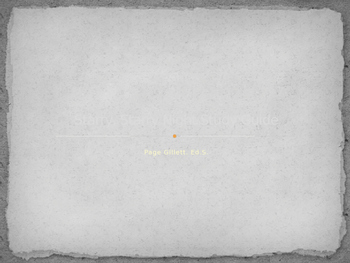
Starry, Starry Night Study Guide for Science Olympiad
This is a power point resource that we used to study for the Elementary Science Olympiad event Starry, Starry Night. It goes over the vocabulary as well as including images of the slides they need to study and detailed instructions to find the stars and constellations based on the event guidelines.
Subjects:
Grades:
3rd - 5th

Astronomy Unit
1. Presentation (90 Slides): This file contains the presentation in PDF format. To view the PDF file as a presentation, select "view" and then click "full screen mode." There is also a Microsoft PowerPoint version of this presentation. The PowerPoint version includes a link to the Google Slides version.Topics Include:*The Solar System (Sun, Planets, Moon)*Seasons and Shadows*Moon Phases and Tides*Constellations (Ursa Major, Ursa Minor, Orion)*Navigational Tools (sextant, astrolabe, compass, tel
Subjects:
Grades:
4th - 6th

Earth-Sun-Moon, Moon Phases, Eclipses, Tides BINGO REVIEW
I use this fun Earth-sun-moon bingo after teaching my Earth in the Universe unit. This is a great review before the unit test.
This product, along with many other great things, is included in my Earth in the Universe Bundle, check it out before purchasing this product. It is a much better value!
Earth in the Universe Unit
The bingo review covers:
The relationship between the Earth/Moon/Sun (6.E.1.1)
-Rotation / Revolution of Earth
-The tilt of the earth causing the seasons (equinoxes and
Subjects:
Grades:
5th - 8th
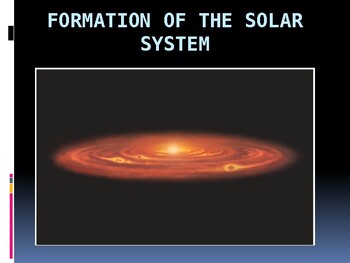
SES 4U_Unit 2_Solar System_ Lesson 1_ Formation of the Solar System
In this first lesson of the unit, the students will learn about the Formation of the Solar System. Since the lesson is long, there is an accompanying student worksheet. The students will then watch a movie (link included) and complete the video worksheet included. Lesson sheetDownload includes:- powerpoint, lesson worksheet, video worksheet, answer to video worksheet
Subjects:
Grades:
12th
Also included in: SES 4U_ Unit 2_ Solar System_ ENTIRE UNIT BUNDLE

Jeopardy Review Game for Space Test
I use this jeopardy game to help my students review for their space test. The categories in this game are:
1) Sun-Moon-Earth
2) Seasons
3) The Sun
4) Day/Month/Year or Stars
5) Misc.
If you feel the questions and answers don't fit your curriculum, feel free to change them. It is nice to have the template I created to work with, that way you aren't starting from nothing. To actually play the game, you must click on the "slideshow" tab in Powerpoint, and then click on "from beginning." You'll b
Subjects:
Grades:
4th - 7th
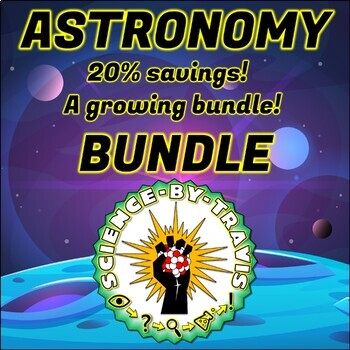
Bundle: Astronomy Bundle
This bundle is a $68.50 value, but has been marked down by 20%! A great deal, so don't miss out!This digital package contains everything that I have personally made and incorporate into the current science curriculum about the Universe and Space Exploration.The FIVE Power Points together,, the test, worksheets, lab, study material, and foldables are a total of 415 pages! (Not everything in the thumbnails can be shown - it's a lot!) DISCLAIMER: Some of the items in this bundle are PowerPoints. Pl
Subjects:
Grades:
6th - 9th
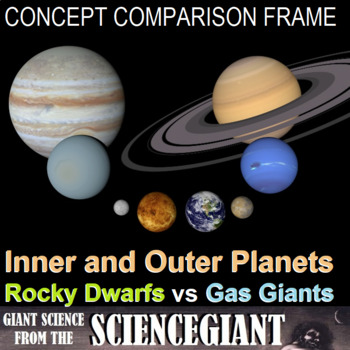
Concept Compare: The Inner and Outer Planets (rocky dwarf vs. gas giant)
How are the other planets of our solar system different from Earth? This Concept Comparison Frame helps students contrast the Inner and Outer Planets, with the terrestrial rocky dwarfs of Mercury, Venus, Earth and Mars on the one side, and jovian gas giants of Jupiter, Saturn, Uranus, and Neptune on the other. The Concept Comparison Routine is used help compare and contrast key concepts. Specifically, students use like and unlike characteristics and categories shared and not shared by two or mor
Subjects:
Grades:
6th - 12th
NGSS:
MS-ESS1-3
Also included in: StayGiant Earth Science Bundle: Astronomy (space exploration)
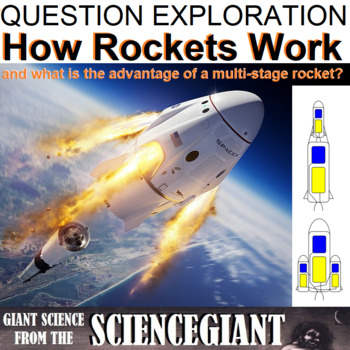
Question Exploration and Lab: How Do Rockets Work?
How Do Rockets Work? This Question Exploration helps Ss explain how Does a Rocket Work, and What is the Main Advantage of a Multi-stage Rocket?Question Exploration Routine is an instructional methods that teachers can use to help a diverse student population understand a body of content information by carefully answering a critical question to arrive at a main idea answer. Students taught using the Content Enhancement routines earned higher total test scores than did students taught using the le
Subjects:
Grades:
6th - 10th
NGSS:
HS-ETS1-2
, HS-ETS1-3
, MS-ETS1-1

Concept Compare: Kepler's (and Newton's) Laws of Planetary Motion for Orbits
This concept comparison is between: Kepler's Laws of Planetary Motion, and how they relate to Newton's Laws of Motion and the Law of Universal Gravitation. Bring a calculator!The Concept Comparison Routine is used help compare and contrast key concepts. Specifically, students use like and unlike characteristics and categories shared and not shared by two or more concepts to better understand the overall concept. Students taught using the Content Enhancement routines earned higher total test scor
Subjects:
Grades:
7th - 12th, Higher Education
NGSS:
HS-ESS1-4
Also included in: StayGiant Earth Science Bundle: Astronomy (space exploration)
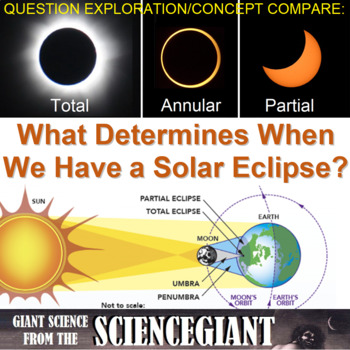
Concept Compare and Question Explore: Solar Eclipse on January 14, 2029
Why do eclipses happen? Why doesn't every new moon result in a solar eclipse? This question exploration helps students explain What determines when do we have a solar eclipse? It also includes: a concept comparison of three solar eclipses visible in the United States: a partial eclipse on Wednesday, January 26, 2028 and Sunday, January 14, 2029; an annular eclipse on Thursday, June 11, 2048; and a total solar eclipse of Wednesday, March 30, 2033 (only visible in Alaska. For the lower 48 states,
Subjects:
Grades:
7th - 10th
NGSS:
HS-ESS1-4
, MS-ESS1-1
Also included in: StayGiant Earth Science Bundle: Astronomy (space exploration)
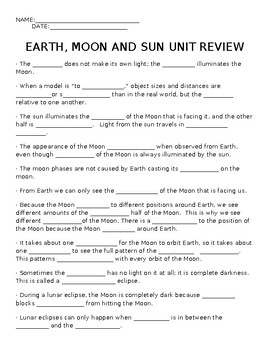
Earth, Moon and Sun Amplify Review
This document serves as a study tool for all of the key concepts taught in the Earth, Moon and Sun Unit of Amplify. It is editable to meet your needs. It includes spaces for students to create diagrams showing some of the key concepts as well.
Subjects:
Grades:
5th - 8th
Types:
NGSS:
MS-ESS1-3
, MS-ESS1-1
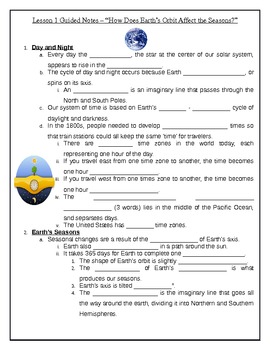
Earth and Space Guided Notes
Designed to accompany textbook lessons, these fill-in notes cover a unit on Earth & Space science. Topics covered include rotation, revolution, seasons, time zones, moon phases, the sun, and the solar system.
Subjects:
Grades:
5th - 6th
Types:
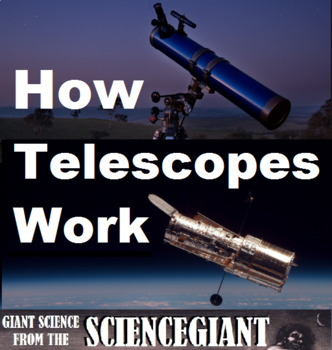
Concept Compare: Great Galileo! How Telescopes Work (refractor,reflector,radio)
What are telescopes and how do they work? This Question Exploration helps Ss explain how do different types of telescopes work. The Concept Comparison contrasts refracting, reflecting and radio telescopes. And there is a Frame reviewing the astronomical accomplishments of the first champion of telescopes -- Galileo Galilei. Magnifico!Framing Routines and Question Exploration Routines are instructional methods that teachers can use to help a diverse student population understand a body of content
Subjects:
Grades:
7th - 10th
NGSS:
HS-PS4-5
, MS-PS4-2
, HS-PS4-1
Also included in: StayGiant Physics Bundle: Optics
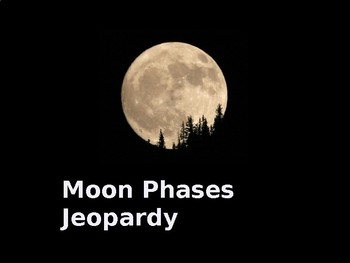
Moon Phases Jeopardy Game
This goes great with my moon phases gallery walk!This is a jeopardy style PowerPoint featuring the phases of the moon!It's an excellent review game for the moon phases.Topics include:-phases of the moon-order of the phases-eclipsesThis presentation is exactly as advertised! Let me know if you have any questions.
Subjects:
Grades:
3rd - 12th
Also included in: Phases of the Moon BUNDLE Gallery Walk, Slideshow, and Jeopardy Game

Question Exploration: What Causes Seasons and the Solstices?
What Causes Seasons and Solstices? This question exploration helps students explain how the Earth has seasons because its axis is tilted. Earth rotates on its axis as it orbits the Sun, but the axis always points in the same direction, creating a North Pole!The resource also includes reading excepts:"The Measure of Eratosthenes" by Carl Sagan. From the first episode of Cosmos, Sagan easily proved the Earth was a sphere using the summer solstice, the shadows of some sticks, a piece of cardboard,
Subjects:
Grades:
7th - 12th
NGSS:
HS-ESS2-4
, MS-ESS2-6
, MS-ESS1-1
Also included in: StayGiant Earth Science Bundle: Astronomy (space exploration)
AP Biology Unit 7. Natural Selection and Evolution. 1st year teacher toolkit
AP Biology 2019. Unit 7. Natural Selection and Evolution. 10 teaching lessons, 7 review powerpoints, 12 study guides and 6 assessments free of charge.7.1 Introduction to Natural Selection7.2 Natural Selection7.3 Artificial Selection7.4 Population Genetics7.5 Hardy-Weinberg Equilibrium7.6 Evidence of Evolution7.7 Common Ancestry7.8 Continuing Evolution7.9 Phylogeny7.10 Speciation7.11 Extinction7.12 Variations in Populations7.13 Origin of Life on EarthThe lessons come with teaching PowerPoints wh
Subjects:
Grades:
11th - 12th
Also included in: AP Biology, 1st year teachers toolkit - the full course + free resources
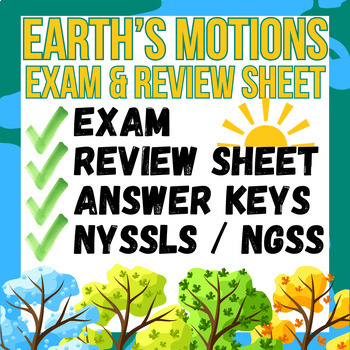
Earth's Motions EXAM & Review Sheet - Astronomy Mastery: NYSSLS / NGSS Aligned
Unlock the mysteries of the cosmos with our "Earth's Motions EXAM & Review Sheet - Astronomy Mastery: NYSSLS / NGSS Aligned." This comprehensive study guide is designed to elevate your understanding of Rotation, Revolution, and Seasons, aligning perfectly with NYSSLS and NGSS standards.Key Features:NYSSLS / NGSS Aligned: Our exam and review sheet adhere to the latest standards, ensuring a curriculum-synced learning experience.Included Study Guide: Dive deep into the intricacies of Earth's mo
Subjects:
Grades:
7th - 9th
Also included in: Astronomy Unit Bundle - Comprehensive Curriculum - NGSS & NYSSLS Aligned
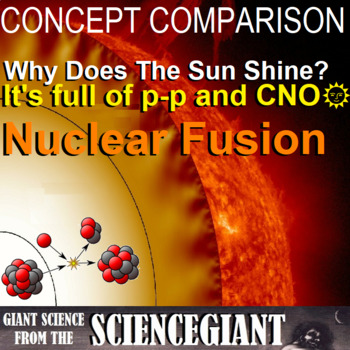
Concept Compare: Why Does the Sun Shine? Thermonuclear Fusion! (p-p and CNO)
This Concept Comparison of Thermonuclear Fusion contrasts proton-proton (p-p) chain reactions, and the "cold" carbon-nitrogen-oxygen (CNO) cycles. Help Ss communicate scientific ideas about the way stars produce elements over their life cycle. Emphasis is on the way nucleosynthesis, and therefore the different elements created, varies as a function of the mass of a star and the stage of its lifetime. As cosmologist Carl Sagan famously said, “We are made of star stuff.” And we literally are! We a
Subjects:
Grades:
8th - 12th, Higher Education
NGSS:
HS-PS1-8
, HS-ESS1-3
, HS-ESS1-1
Also included in: StayGiant Earth Science Bundle: Astronomy (space exploration)
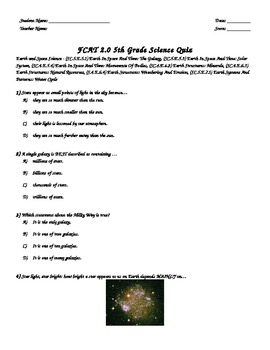
NGSSS Science Quiz-Earth and Space Science-Rocks, Earth, Planets
This is a standardized style test with 29 multiple choice questions and 1 open-ended response.
This assessment can be used as a study guide-test prep or benchmark assessment.
The Standards covered are:
Earth and Space Science - (SC.5.E.5.1) Earth In Space And Time: The Galaxy, (SC.5.E.5.3) Earth In Space And Time: Solar System, (SC.4.E.5.4) Earth In Space And Time: Movements Of Bodies, (SC.4.E.6.2) Earth Structures: Minerals, (SC.4.E.6.3) Earth Structures: Natural Resources, (S.4.E.6.4) Earth St
Subjects:
Grades:
3rd - 5th
Types:
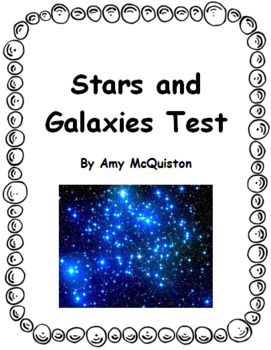
Stars and Galaxies Test and Study Guide
This four page test with answer key and four page study guide, on stars and galaxies was designed for middle school students with learning disabilities. It could, however, be used with students in grades four through six. The 25 questions are a comprehensive mix of multiple choice questions, diagram labeling, and matching. There is plenty of white space and room to write, along with colorful clipart Here is a sample question with choices: Our galaxy has which shape? A. Irregular or B. Spira
Subjects:
Grades:
5th - 8th
Types:
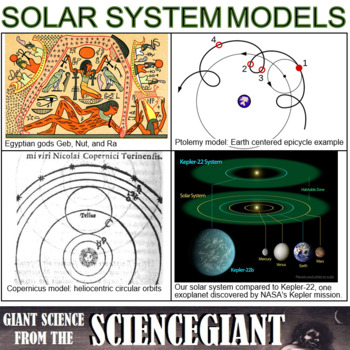
Concept Comparison and Question Exploration: Models of the Solar System
What are historical models of the solar system? This Question Exploration and Concept Comparison helps Ss contrast geocentric model painted in ancient temples, to heliocentric models photographed in modern telescopes. Question Exploration Routine is an instructional methods that teachers can use to help a diverse student population understand a body of content information by carefully answering a critical question to arrive at a main idea answer. Students taught using the question exploration r
Subjects:
Grades:
7th - 10th
NGSS:
HS-ESS1-4
, MS-PS2-4
, MS-ESS1-2
, HS-PS2-4
Also included in: StayGiant Earth Science Bundle: Astronomy (space exploration)

Astronomy Quiz & Review Sheet - Universe, Galaxies, Solar System (NYSSLS & NGSS)
Ignite your students' passion for astronomy with our comprehensive Astronomy Quiz and Review Bundle. This all-inclusive package includes an Astronomy Review Sheet, an Answer Key, a Full Quiz, and an Answer Key for the quiz. It's the perfect resource for middle and high school educators, homeschoolers, and anyone eager to delve into the wonders of the cosmos.Key Features:Astronomy Review Sheet: Our Review Sheet covers essential concepts related to the universe, galaxies, the solar system, and cel
Subjects:
Grades:
7th - 10th
Types:
Also included in: Astronomy Unit Bundle - Comprehensive Curriculum - NGSS & NYSSLS Aligned
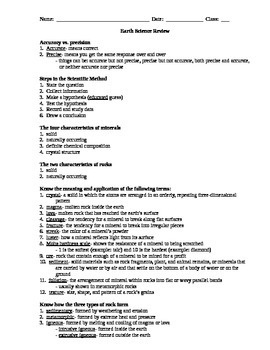
Earth Science final review sheet- geology, meteorology, hydrology, astronomy
INCLUDES THREE COPIES:
- Pages 1-11 are the answers
- Pages 12-22 are the outlines for students to fill in
- Pages 23-35 are a modified/shortened outline for students with disabilities
This is a compilation of all of the review sheets I use throughout the year (shortened a bit to leave just the bare bones needed to understand the standards). I follow the Georgia Performance Standards, 6th grade, science, which includes geology, hydrology, meteorology and astronomy.
Subjects:
Grades:
6th - 8th

"Astronomy: A Self-Teaching Guide (Moche) Ch. 09 The Jovian Planets Study Guide
I use Dinah Moche's popular work "Astronomy: A Self-Teaching Guide" as a textbook for my elective high school Astronomy class. While teaching Astronomy, I created a study guide handout along with Google Slides for Ch. 09 of Moche’s book. The study guide covers the Jovian planets Jupiter, Saturn, Uranus, and Neptune. The study guides can serve as “guided notes” for the Google Slides, and include questions, diagrams, and vocabulary for each of the topics. The Ch. 09 study guide features 87 questio
Subjects:
Grades:
9th - 12th
Types:
Showing 1-24 of 206 results





